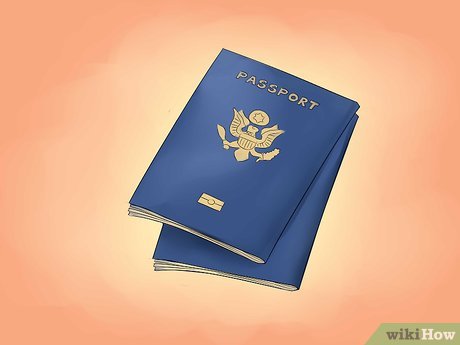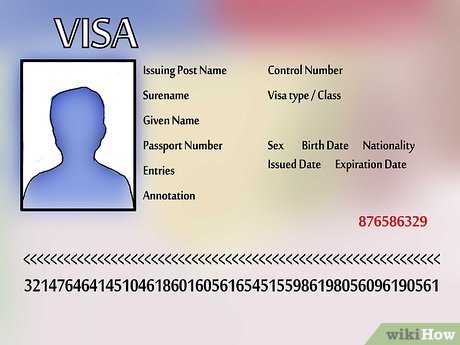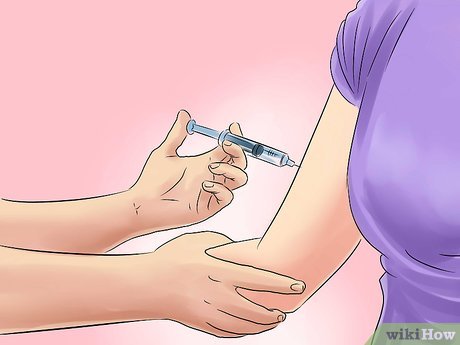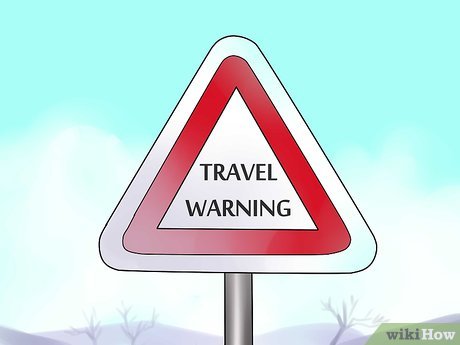Mexico is a beautiful tropical destination. Whether you are going there to sit on the beaches, cruise the Caribbean or see its Mayan or Aztec cultural highlights, it is a good thing to be prepared before you go. You should make sure you have all the proper documentation, immunizations and supplies before you go on your trip. This article will tell you how to prepare for a trip to Mexico.
Steps
1Apply for your passport. For entry into Mexico, your passport must be good for at least 90 days after your departure date. It usually takes 4 to 6 weeks to receive your passport; however, it is a good idea to apply at least 3 months in advance, in case of delays.Passport application fees vary from country to country. Most passport offices require you to fill out a form, bring or take a profile picture with a white background, a birth certificate or other ID. If you are renewing your passport, you may have to submit your most recent passport book.
2Apply for a visa, if necessary.Residents of the United States, Canada and most European countries do not need a visa to visit Mexico if they are staying less than 180 days.People looking to work or attend school in Mexico will likely need to apply for a visa.Business travelers do not need a visa if their travel will take less than 180 days; however, they must apply for a Form FMM to conduct business activities.
3Get immunizations 4 to 6 weeks before you depart. The vaccines recommended for travel to Mexico include Hepatitis A, Hepatitis B, Rabies and Typhoid. Go to a travel clinic to receive these immunizations, if possible.Make sure you are up to date on all of your routine vaccines, such as influenza, chickenpox, polio, measles/mumps/rubella (MMR) and diphtheria/pertussis/tetanus (DPT). These are given at regular intervals throughout childhood and adulthood. You should be up to date before leaving for any foreign country.
4Check if your trip destination is prone to malaria outbreaks. Visit the CDC website to check if your trip will take you through this area. Areas near the United States/Mexico border are not currently affected.Areas that are affected include: Chiapas, Nayarit, Oaxaca, Sinaloa, Chihuahua, Durango, Sonora and Tabasco.Malaria prevention includes anti-malarial prescription drugs, insect repellent and mosquito netting over your bed.
5Learn simple Spanish phrases, like how to ask for a taxi, order food or get a hotel room, if you do not already speak the language. Some rural areas of Mexico have fewer multi-lingual people. It is a good idea to start learning these phrases at least a month in advance, or longer in advance if you want to be more proficient in Spanish.Buy a Spanish phrase book to take with you, in case you need to communicate about something you have not learned.
6Read up on your destinations to get the most of Mexican culture and history. If you do not already speak Spanish, the tourist information in your language may not be enough explanation.
7Check your current health insurance regarding overseas coverage. If you are not covered, apply for travel insurance. Mexico’s health insurance system is private and will require proof of coverage if you are injured or sick.
8Pay attention to current events and travel warnings. Some areas of Mexico near the United States border and in large cities have been the subject of travel advisories in recent years. Adjust your trip or postpone accordingly if your country warns against travel.
9Inform your country’s embassy of your trip. In the United States, you can enroll in the Smart Traveler Enrollment Program for free and submit your emergency contact information. 
10Leave expensive jewelry or flashy electronics at home. Like most large cities and tourist areas, there is a risk of petty theft. Avoid flashing money or merchandise to avoid being a target.
11Give a copy of your itinerary, passport, visa and all your contact numbers to a close neighbor, friend or family member.
12Pack plenty of sunscreen, sunglasses and a hat. Mexico is closer to the equator and the sunlight is strong. Sunburns and prolonged exposure to direct sunlight place you at risk for skin cancer. Cover your body whenever possible and reapply sunscreen every few hours or after going in the water.
13Forward your mail or ask the post office to hold it for you while you are gone. This can be done just a few days before you leave. If you do not arrange for your mail to be taken and your mailbox is full, your mail can be returned to the sender.
14Contact your bank to tell them where you will be traveling. Credit or debit cards with suspicious purchases outside of your home country may be seen as suspect, leading to suspension or cancellation of your cards.It is advisable to get your pesos through an ATM, so as not to carry too much money at once. It is not necessary to exchange your local currency for pesos before you go, unless you are going to a rural area without ATMs.








